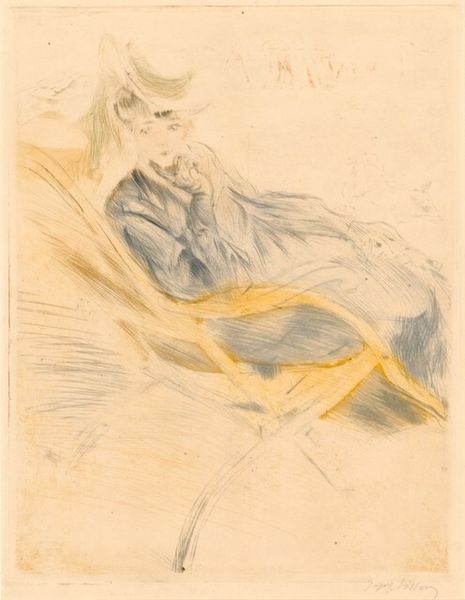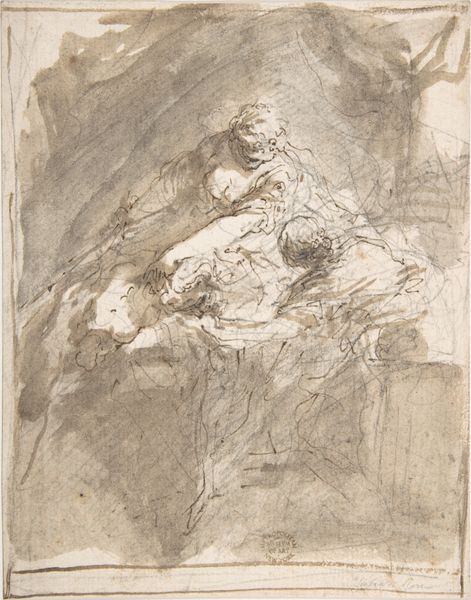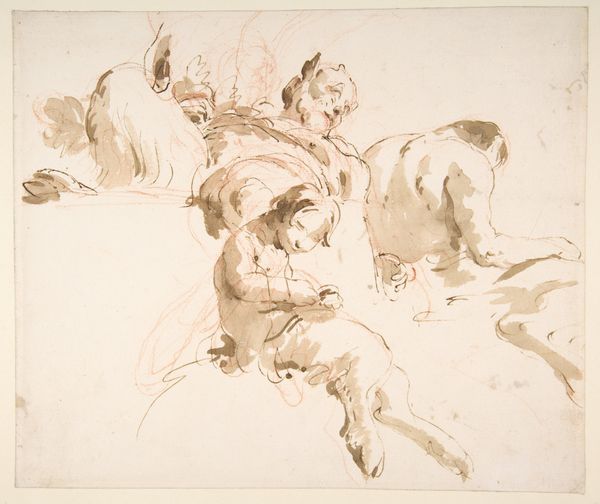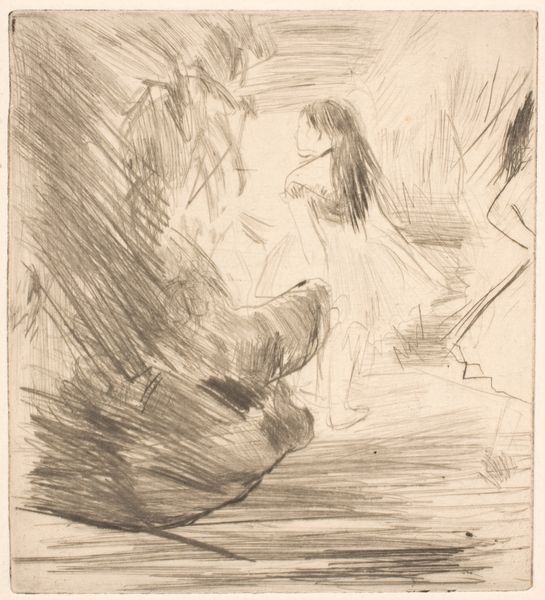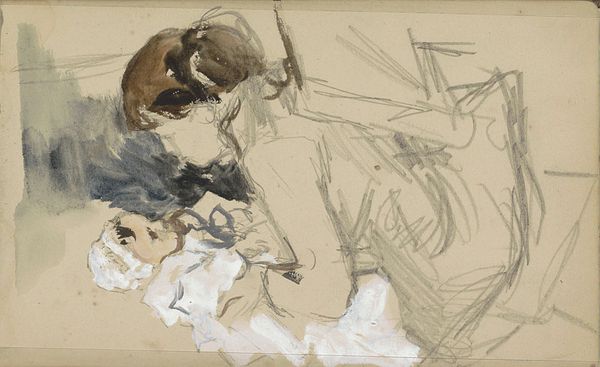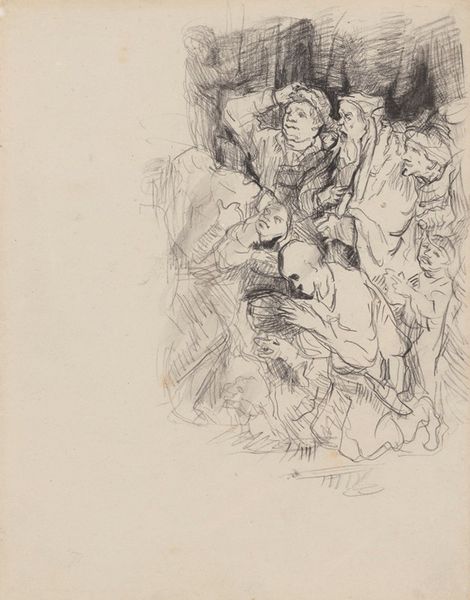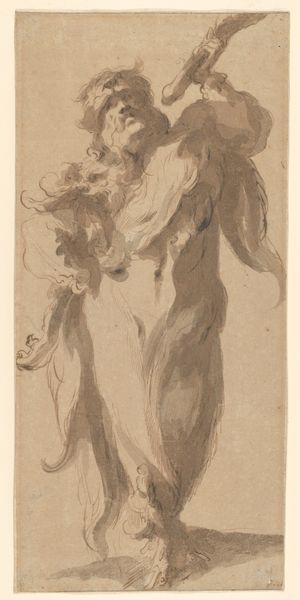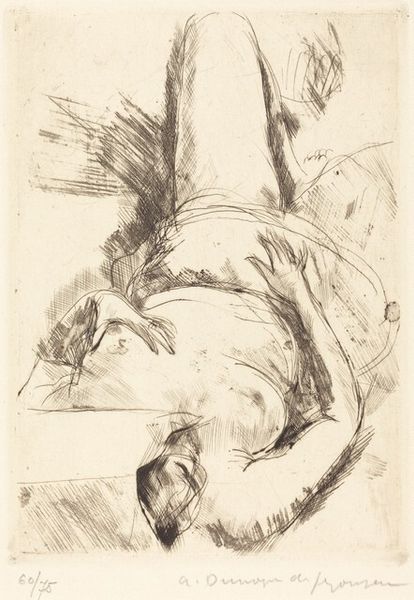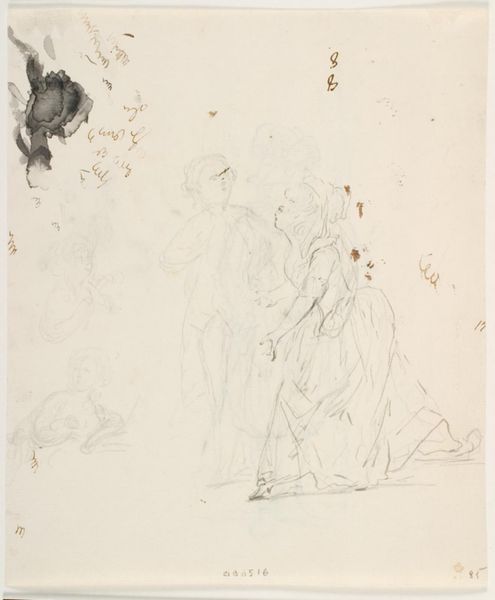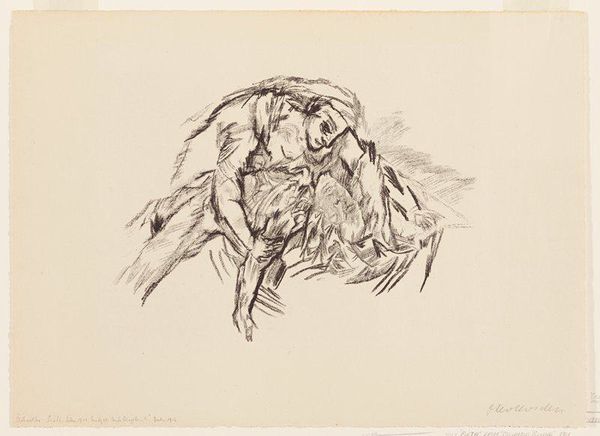
drawing, ink
#
portrait
#
drawing
#
impressionism
#
oil painting
#
ink
#
portrait drawing
#
academic-art
#
nude
#
watercolor
Copyright: Public Domain: Artvee
Curator: This is "Le Sommeil, Femme assise" – or "Sleep, Seated Woman" by Pierre Puvis de Chavannes, created in 1867 using ink and watercolor. Editor: There’s a softness, a kind of dreamy lethargy emanating from the piece. The monochromatic sepia tones definitely add to that. It’s not just sleep; it feels like a meditation on vulnerability, right? Curator: Precisely. Puvis de Chavannes' art was pivotal in 19th-century France; his depictions often played with ideas of idealism versus the realities of life for working-class women, particularly within the historical contexts of poverty and exploitation. Editor: It almost looks like she's both present and absent; it draws us to think about the female body, artistic representation, and its association with sleep – or death – a kind of liminal state of in-betweenness, like in so many artistic masterpieces featuring reclining female nudes. Is there something else the artist could be exploring? Curator: Well, during that era, representations of women frequently swung between pure idealization and critical hyper-sexualization, very rarely did artworks in galleries present anything in-between, therefore the piece could be intended to critique societal perceptions of femininity by emphasizing interiority. She’s not just reclining; she’s withdrawn. Editor: I'm drawn to the subtle brushstrokes creating texture – that contrasts so sharply against the smoothness of the pale skin. There’s an intimacy about it, wouldn’t you agree? As though he's revealing more than just the body, but also a state of mind. I think we, today, in the contemporary age, would perhaps associate this type of liminal, sleepy representation as an idea about self-care, and that really puts a new spin on the message for me. Curator: I see that completely; her solitude becomes almost... empowering when considered within broader narratives of self-discovery. This piece opens the door for dialogues that resonate profoundly beyond just aesthetics. Editor: Indeed! Considering contemporary self-perception, especially of the feminine self in artwork, definitely transforms the piece, revealing it in entirely new light. Curator: An exploration of personal identity against historical frameworks truly makes it engaging to consider.
Comments
No comments
Be the first to comment and join the conversation on the ultimate creative platform.
